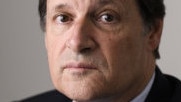‘Watershed moment’: Australian government paid to borrow
The Australian government has for the first time been paid to borrow, after an investor bought Commonwealth Treasury notes on Thursday morning at a yield of -0.01 per cent.

The Australian government has for the first time been paid to borrow, after an investor bought Commonwealth Treasury notes on Thursday morning at a yield of -0.01 per cent.
In a watershed moment in the country’s financial history, the Australian Office of Financial Management auctioned $1.5bn in notes expiring in March 2021, with the highest bidder buying the notes at a price which would offer them a negative return by the time the debt expired in March 2021.
AOFM chief executive Rob Nicholl said “it’s a reflection of the times we are in”.
The AOFM does not divulge how much of the $1.5bn tender was sold at negative rates, only that the highest bidder put in a price which would push the rate below zero.
While the highest bid for the March notes was -0.01 per cent, the “worst” bid was at a still low yield of 0.07 per cent.
The AOFM does not release details of the buyers, but only banks are participants. Moreover, it is likely that an overseas bidder would have been prepared to buy the notes at a negative yield, on the basis they would be able to be able to swap it back into their own currency and receive a higher and positive yield.
Queensland Investment Corporation director of rates and inflation Beverley Morris said the purchase of Australian government debt was “a watershed moment”.
“While we won’t know, our suspicion is that it was probably a buyer from offshore,” Ms Morris said.
While government debt trading at negative yields has been a feature of the world financial market for years, the AOFM tender marks the first instance of an Australian government security doing so.
The AOFM received 58 bids for the March 2021 notes worth $8.2bn, or 5.5 times what was available – reflecting the huge demand for the notes. The weighted average yield was a meagre 0.0099 per cent. A year ago a similar note tender was 2.7 times oversubscribed and sold at an average yield of 0.97 per cent.
Since then, the COVID-19 pandemic has triggered the Reserve Bank to push its cash rate to 0.1 per cent and pin bond yields out to three years at that rate, and launch a $100bn quantitative easing program.
Ms Morris said it was unlikely that longer term bonds would also trade below zero yields, at least in the foreseeable future. Given how strongly the economy was performing, the RBA would not need to push rates even lower.



